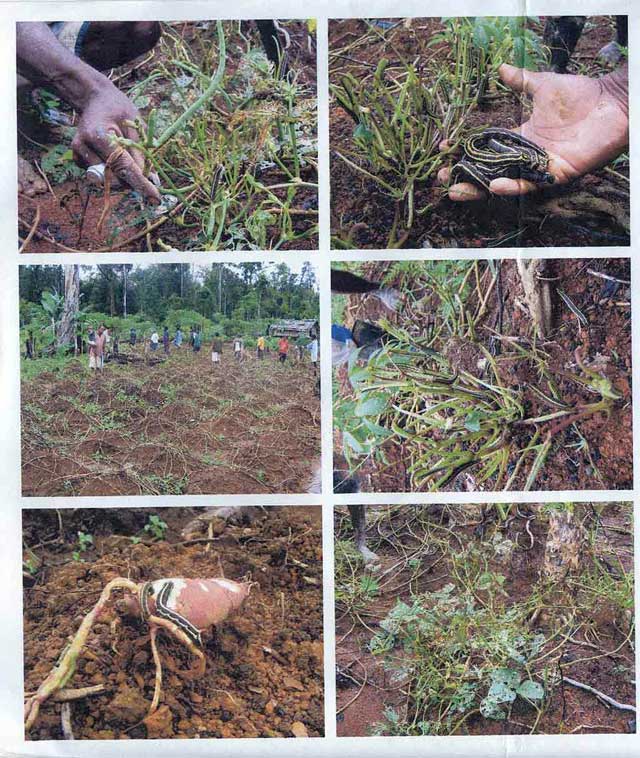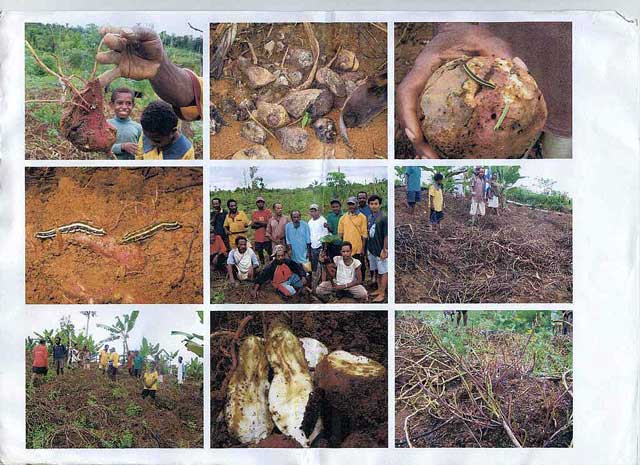Pests > Pests Entities > Insects > Moths & butterflies > Agrius species > Agrius convolvuli, PNG
Pests Pests Entities Insects Moths & butterfliesAgrius species Agrius convolvuli, PNG
|
Outbreak, Papua New Guinea
|
|
|
 |
 |
| May 2007. Caterpillars are devastating sweet potatoes in East Awin Refugee Camp in Papua New Guinea. The larva is a voracious feeder on the leaves and tubers of sweet potatoes, as pictures show.
Agrius convolvuli was the likely cause. Outbreaks of this are not uncommon in Melanesia and usually follow periods of severe weather, for example, cyclones or droughts. Normally, the population is kept under control by a range of parasites and predators, but the severe weather disrupts these and the population of the hawkmoth gets out of control.
Unless there is severe food shortage, the best advice is to do little other than physical removal of as many larvae and pupae as possible and plant the sweet potato again. One way to do this is to move chickens into the sweet potato garden; they will have a feast. The population of the natural parasites and predators normally rebound within a few months and the hawkmoth will be brought back under natural control.
Of course, if the severe weather persists for a long time and there are food shortages then more active control of the hawkmoth may be needed. At this point, the situation becomes more complex as there is need to consider which pesticide and economic costs. |
|
|
